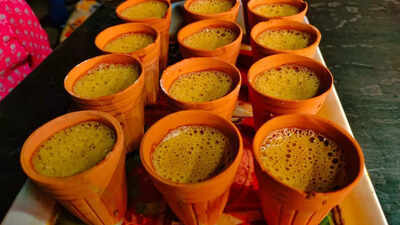
Tea leaves are packed with tannins, astringent compounds that can bind non-heme iron in plant foods and carry it out of the gut before the mineral is absorbed. Studies show the effect is strongest in vegetarians and vegans, whose iron already comes mainly from beans, lentils and leafy greens. If you drink tea with meals and notice fatigue or low ferritin on blood tests, try waiting an hour after eating before pouring the pot or adding a squeeze of lemon, whose vitamin C counteracts tannin binding.
According to reports, black tea averages 40–60 mg caffeine per cup; strong green can hit similar numbers. Push past 400 mg per day, and common caffeine symptoms racing heart, shaky hands, and nighttime wake-ups start to appear. Doctors note that sensitive drinkers sometimes feel weird after only two large mugs. Cutting back, brewing shorter and switching to low-caffeine varieties like white or rooibos tea can soften the hit without quitting outright.
Tea’s tannins give the drink its pleasant dryness but also irritate stomach tissue when consumed in high concentration. People prone to acid reflux often report heartburn or nausea after several strong cups on an empty stomach. Eating first, diluting with milk or choosing milder teas helps buffer the acids.Frequent caffeine swings—big doses followed by sudden gaps—can trigger withdrawal headaches. On the flip side, very high intake (700 mg+ per day) may produce chronic tension headaches from constant vessel constriction. A slow taper, not a cold turkey quit, is the classic remedy.
Caffeine alters brain chemistry by blocking adenosine receptors. Drink enough, and the body adapts, meaning you need more tea for the same alertness and feel foggy without it. Dependence at this level is usually mild, but breaking the cycle may take a week of gradual reduction and plenty of water.
High caffeine intake has been linked to lower birth weight and miscarriage. Health agencies cap pregnancy caffeine at 200 mg daily, about three small cups of tea. Herbal teas made from raspberry leaf, peppermint or ginger can fill the gap safely, though always check labels.
In very large doses, caffeine speeds calcium excretion through urine, raising long-term fracture risk, especially in people who also eat low-calcium diets. Two lifestyle tweaks—adding dairy or fortified plant milk to tea and staying below four cups—keep the effect negligible for most adults.
Caffeine briefly elevates systolic and diastolic pressure and can provoke palpitations in sensitive hearts. The surge is modest for many healthy drinkers, yet anyone with hypertension or arrhythmia should track blood-pressure readings and time tea earlier in the day.
Tea plants draw minerals from the soil; poor agricultural controls in some regions leave dried leaves with measurable lead, aluminium or fluoride. Independent testing finds levels well below safety thresholds in reputable brands, but rotating sources and choosing certified products reduce exposure.
1. How many cups of tea a day are safe?
2. Does adding milk stop tannins from blocking iron?
3. Which teas have the least caffeine?
4. Can kids drink tea safely?
5. Does green tea carry the same risks?